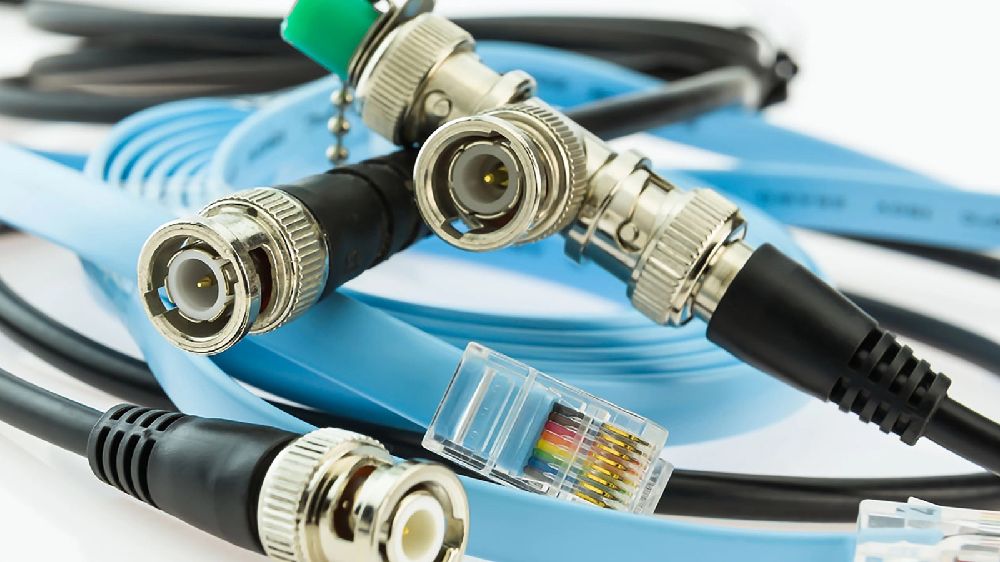
Choosing the Right Video Transmission: Coaxial, Ethernet, or Wireless?
When setting up a security camera system, one of the biggest considerations is video transmission. Older systems rely on coaxial cables, while modern setups favor Ethernet cables or even wireless connections for greater convenience. Understanding video transmission methods is essential for achieving the best performance, reliability, and ease of installation. To help with this decision, let’s break down the different options, their pros and cons, and which one is best suited for your needs.
Coaxial Cables: The Traditional Option
Coaxial cables have been a staple in video transmission for decades. Commonly used in CCTV (closed-circuit television) systems, they are known for their durability and reliable signal transmission.
Types of Coaxial Cables
- RG59 – This is the most common coaxial cable used in CCTV installations. It supports analog video signals and has a maximum recommended transmission distance of about 300 meters without signal degradation.
- RG6 – A thicker version of RG59, RG6 can transmit signals over longer distances with less interference, making it useful for larger installations.
- RG11 – The thickest of the three, RG11 allows for even longer transmission distances. However, it is more challenging to install due to its rigidity.
Advantages of Coaxial Cables
- Strong, interference-resistant signal
- Compatibility with older analog systems
- Reliable over long distances
Disadvantages of Coaxial Cables
- Bulky and harder to install
- Limited bandwidth compared to modern alternatives
- Requires additional power cables for the camera
Ethernet Cables: The Modern Standard
Ethernet cables are now the preferred choice for most surveillance systems, especially those that use IP cameras. They provide high-speed data transmission and support Power over Ethernet (PoE), which allows cameras to receive power and data through a single cable.
Types of Ethernet Cables
- Cat5e – Supports speeds up to 1 Gbps and is suitable for short to medium distances (up to 100 meters).
- Cat6 – Provides better performance with speeds up to 10 Gbps and enhanced resistance to interference.
- Cat6a – Similar to Cat6 but with improved shielding, making it ideal for longer runs.
- Cat7 and Cat8 – High-end cables offering superior shielding and even higher speeds, though they are generally unnecessary for most security camera installations.
Advantages of Ethernet Cables
- Faster data transmission
- PoE capability reduces the need for separate power cables
- Supports high-resolution video, including 4K
- Easier to install than coaxial cables
Disadvantages of Ethernet Cables
- Maximum cable length is typically 100 meters without signal boosting
- More susceptible to interference in high-electromagnetic environments
Wireless Connections: The Ultimate Convenience
Wireless technology has revolutionized video transmission, making installations simpler and more flexible. These security cameras use Wi-Fi or other wireless communication methods to send video footage to a central storage system.
Types of Wireless Connections
- Wi-Fi – The most common wireless option, allowing cameras to connect to a home or business network.
- Point-to-Point (P2P) Wireless – Used for longer-distance communication between cameras and a receiver.
- Cellular Networks (4G/5G) – Cameras with SIM cards can transmit video over mobile networks, useful for remote locations without Wi-Fi.
Advantages of Wireless Connections
- Easy to install and relocate
- No need for extensive wiring
- Ideal for temporary surveillance setups
Disadvantages of Wireless Connections
- Signal interference from walls, other networks, or electronic devices
- Requires a stable internet connection for smooth streaming
- Bandwidth limitations can affect video quality
Which Option is Best for You?
The right choice depends on your specific needs.
- For legacy systems or long-distance transmission, coaxial cables are still viable.
- For modern, high-quality surveillance with easier installation, Ethernet cables with PoE are the best option.
- For flexible, hassle-free setups, wireless cameras provide the most convenience.
By understanding video transmission methods, you can ensure that your security system operates efficiently. This will provide reliable footage when you need it most while maximizing performance and ease of use.
